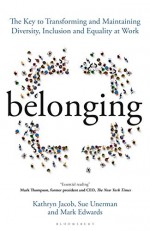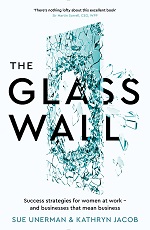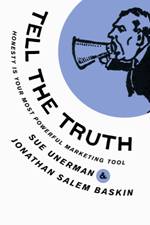
If you have to choose between having hard or soft power, which should you go for?
In 1919 the British Empire was at its largest. It covered a quarter of the land mass of the world, and ruled over a fifth of the population. This was hard power, command and control, and it has mostly and thankfully been dismantled.
They used to say that the sun never set on the empire. To quote Shane McGowan “It is now deep in darkness”. But there is an aspect of Britishness which still is pre-eminent around the world. In terms of soft power, UK is still one of the top nations in the world. In fact, in 2023 the United Kingdom was second only to the USA in the Brand Finance soft power index.
So, what constitutes soft power? It is the ability to persuade rather than coerce. It involves bringing people over to your camp through appeal and attraction, and shared experiences and values.
Hard power is a military invasion. Economic sanctions are hard power. In contrast, soft power is persuasion, without recourse to force.
The UK’s continued appearance at the top of the rankings must these days has less to do with politics and more to do with traditions like a good cup of tea, and culture, music, movies, tv and sport. These days the sun never sets on a Manchester football team fan, an Ed Sheeran fan or a “Whovian.” Hard power gave us Land of Hope and Glory, soft power is a host of global hits from Stairway to Heaven to Harry Styles ‘ As it was” with influential British artists like Oasis, The Beatles, Adele, Elton John and The Rolling Stones.
Diane Coutu, director of client communications at Banyan Family Business Advisors, explains in HBR: “In essence, power is nothing more than the ability to affect others to get what you want, and that requires a set of tools. Some of these are tools of coercion or payment, or hard power, and some are tools of attraction, or soft power. For individuals, charisma (emotional appeal), vision, and communication are key soft-power skills; for nations, soft power is embodied in their culture, values, and legitimate policies.”
You’ve got the choice of chasing soft or hard power in your career. Clearly the best leaders combine both, using soft skills to win people around them over to hard, sometimes tough, decisions.
Unless you chase hard power it can mean that you are overlooked for promotion. If you don’t prioritise climbing the career ladder, if you focus on the work, or the happiness of your team mates then other people might be pushing for that next step to the top and you may get overlooked.
Alternatively, if you are all about climbing the career ladder you could be shocked at how little power you actually have when you do get promoted. There can be a pit of despond that recently promoted directors fall into when they discover that a much longed for career boost means more responsibility and little actual gain in status. It can take time to process the real meaning of leadership status. And wow betide those that forget the mantra to be nice to those when you are on the way up, as you might someday meet them on the way down.
Hard power gives status, people to command, divisions to restructure, expenses to sign off and assistants perhaps to get your dry cleaning. Soft power will win more people over to your point of view. It depends what you want most of course but going by the British Empire it’s soft power that has more longevity and better tunes.






Career stalling? Need a boost? It is all about technique
April 9th, 2024Misty Raney Bilodeau is one of the stars of Homestead Rescue, a very snackable Discovery Channel makeover show.
The twist for this version of the tried and trusted format is that the Raney family turn up at the homes of Americans who have moved off grid. They have left the modern world and are living in the wilderness, trying, and failing to make a success of man versus nature. The families fall victim to predators (bears, coyotes, wildcats); the weather (snow, tornadoes, desert conditions); and their own idiocy (building a home in front of a collapsing mountain, buying a property with no water, or with contaminated water, with no source of food or ending up having to travel 100s miles to earn money to sustain their supposed bucolic aspirations).
The Raney family, long term Alaskan Homesteaders, arrive to rescue them. Marty, the patriarch, with his casual disregard for health and safety and love of a JCB digger and a nifty turn of phrase. Matt, the son, eager to get the family trained in shooting at predators with rifles or bows. And Misty, the epitome of strong femininity and resourcefulness. She normally sorts out the food problems with an inventive approach to animal welfare and growing vegetables.
Without too much exaggeration, after you watch a couple of episodes, you will probably agree that Misty should be the next president. She’s open, warm, inspirational, practical, resourceful, inventive, and empathetic.
However desperate the situation is, Misty will come up with a solution. As she once said: “You can grow food anywhere, it is all about technique”.
She frequently repurposes apparent junk into greenhouses that can successfully grow food. In one episode she rebuilds a school bus into a fertile hothouse.
In another episode she adapts the fertisilation system for crops of acquaponics, using water from fish ponds to fertilise crops, to “duckquaponics”, to create a real breakthrough on a homestead with little water, lots of ducks and an arid garden.
Misty empowers the food growers and care givers in the families she helps (who are predominantly women) by giving them techniques for growth. To get Misty to help, you do however need to live on a Homestead. For those of us that haven’t embraced that lifestyle there is another way to get tips and techniques for growth at work.
As March 2024 marks another International Women’s Day that has seen little progress in terms of lessening the gender disparity globally, we all need to make efforts to be inclusive and equitable. Understanding and sharing techniques, and pragmatic strategies for success at work are a crucial part of this. The Glass Wall, success strategies for women at work and businesses that mean business is a best selling book that I wrote with Kathryn Jacob OBE, published in 2012. It contains many solutions that will help grow women’s careers, just as Misty has techniques to grow gardens.
The book is designed to answer a range of frequent and common issues, issues that many of us have sleepless nights over, from: Do you worry that you’re getting less than your fair share at work?; to do you worry about what people think of you?; do you take the steps you should to progress your career?; Are you sometimes overlooked? Do you ever take things personally?; to do you have any difficult relationships at work? And do you know how to back down?
For one woman we interviewed for the book, the solution to feeling overlooked, lay in changing the language she was using for making suggestions: It is easy to mistake a rejection of your suggestion as a rejection of the idea. Of course it is. Frequently you may find that the rejection is a rejection of the format of the idea, not of the content of that idea. The format of any suggestion is as important as the idea itself. In this instance “Sara” bounced back from an outright rejection by using a football analogy. It is so simple, but it was just luck that she arrived at it. Before you take an idea to your boss, your client, or your team, think about the very simplest way that you can explain it. Find out what they’re passionate about – it might be sport, it might be art, it might be education. Use the language of their passion to explain your thinking.
Misty maintains that she can grow food anywhere under any conditions, we think that you can grow your career under most conditions, but sometimes you have to try new techniques and strategies to change the circumstances around you at work to grow your career.
Posted in MediaComment | Comments Off on Career stalling? Need a boost? It is all about technique